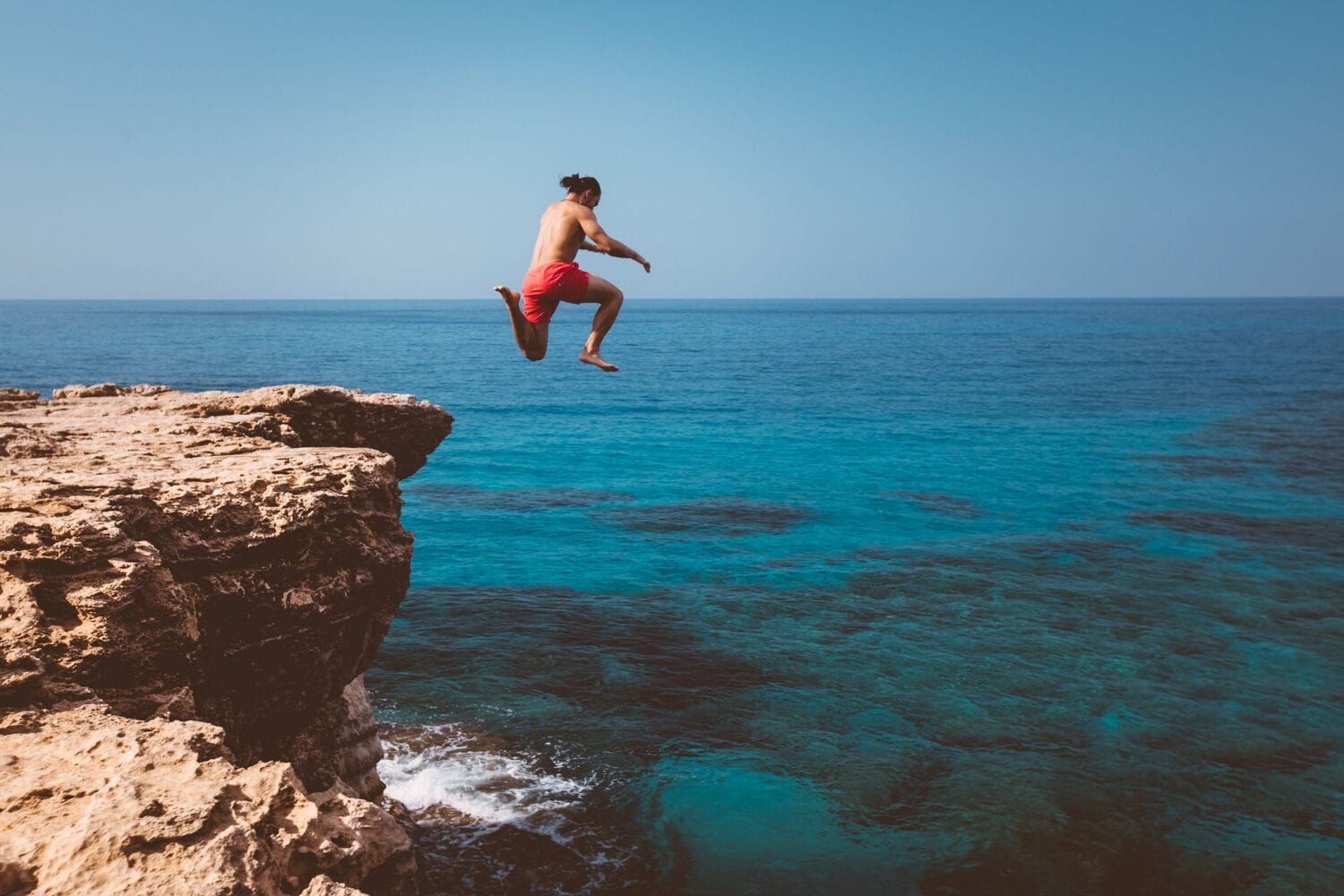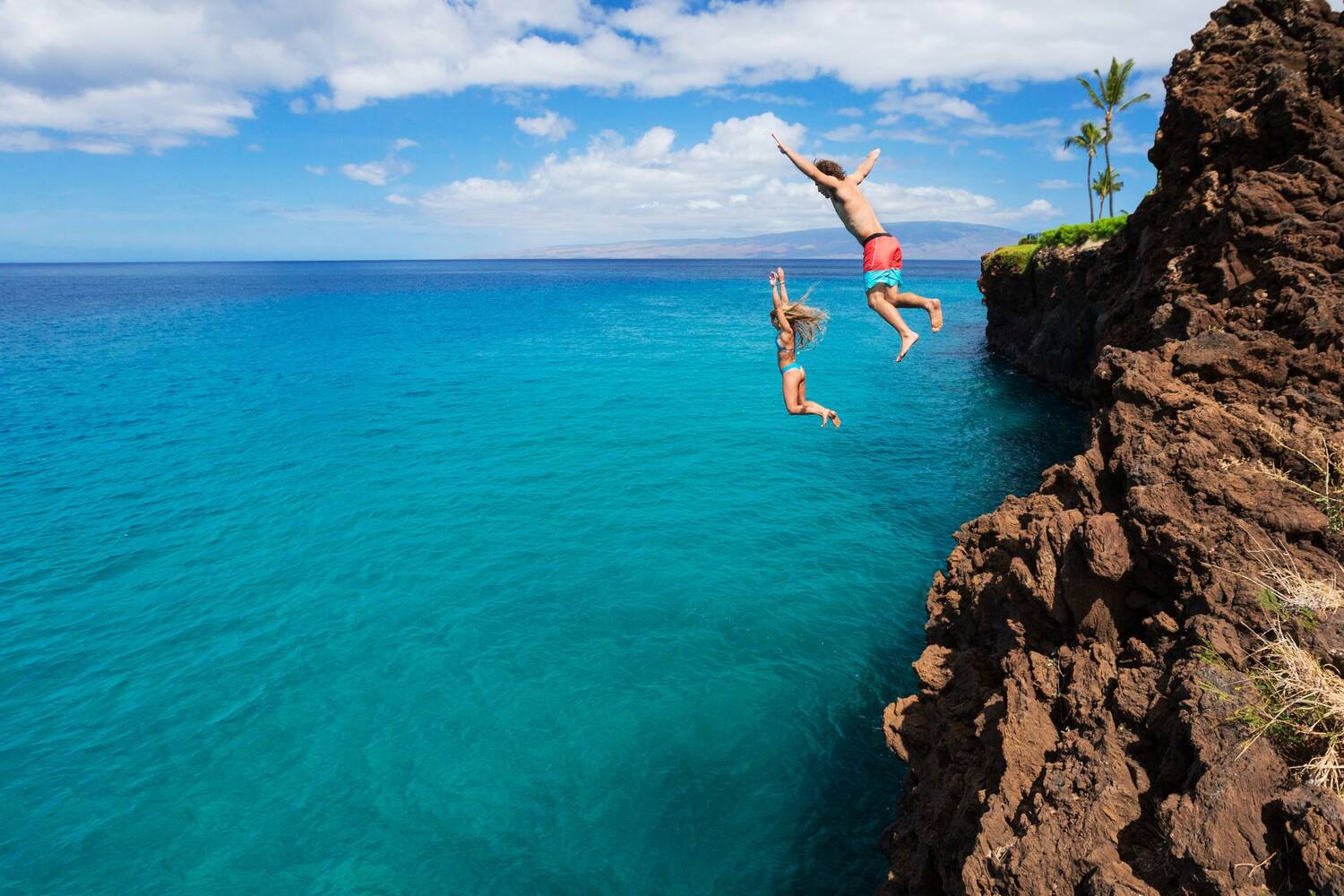If you’re traveling to Hawaii for thrills and adventure, then you might be wondering what the risks of cliff jumping in Hawaii are.
You see, while you will enjoy the landscapes of Oahu, Maui, or other Hawaii islands, understanding the potential hazards before going is critical.
While cliff jumping offers an undeniable adrenaline rush, it comes with inherent risks. We'll look at these risks so you can make responsible choices about if and how you jump.
Why Cliff Jumping in Hawaii is Dangerous
Movies like "Forgetting Sarah Marshall" feature cliff jumps in Hawaii, such as the memorable scene at Laie Point, but what they don’t always show is the potential danger. In the excitement of a vacation, it’s easy to see others jumping and assume it’s safe.
However, cliff jumping is inherently a risky sport. This is why understanding what makes it dangerous is the first step to mitigating those risks.
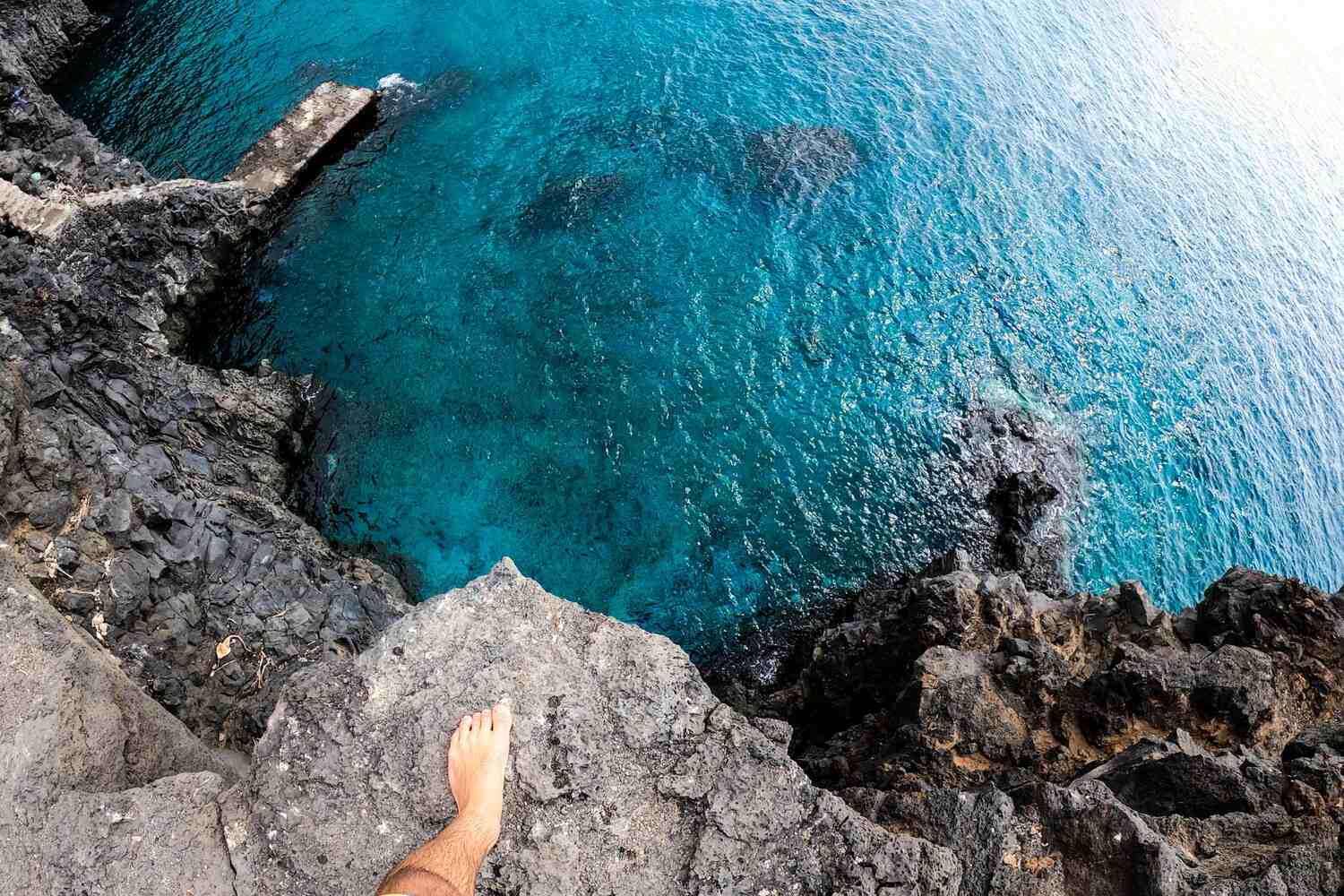
Misjudging Depth and Water Conditions
A common misconception is that water provides a soft landing. However, misjudging the depth, even by a foot, can be like hitting concrete. Jumping from a significant height means you gain speed rapidly.
A 20-foot jump translates to hitting the water at about 25 mph. Imagine the impact at 40 or 60 feet.
Also, equally important is assessing water conditions. Are there submerged rocks or logs you can’t see from above? Is the current strong enough to pull you off course? Even experienced cliff divers meticulously check these factors before each jump.
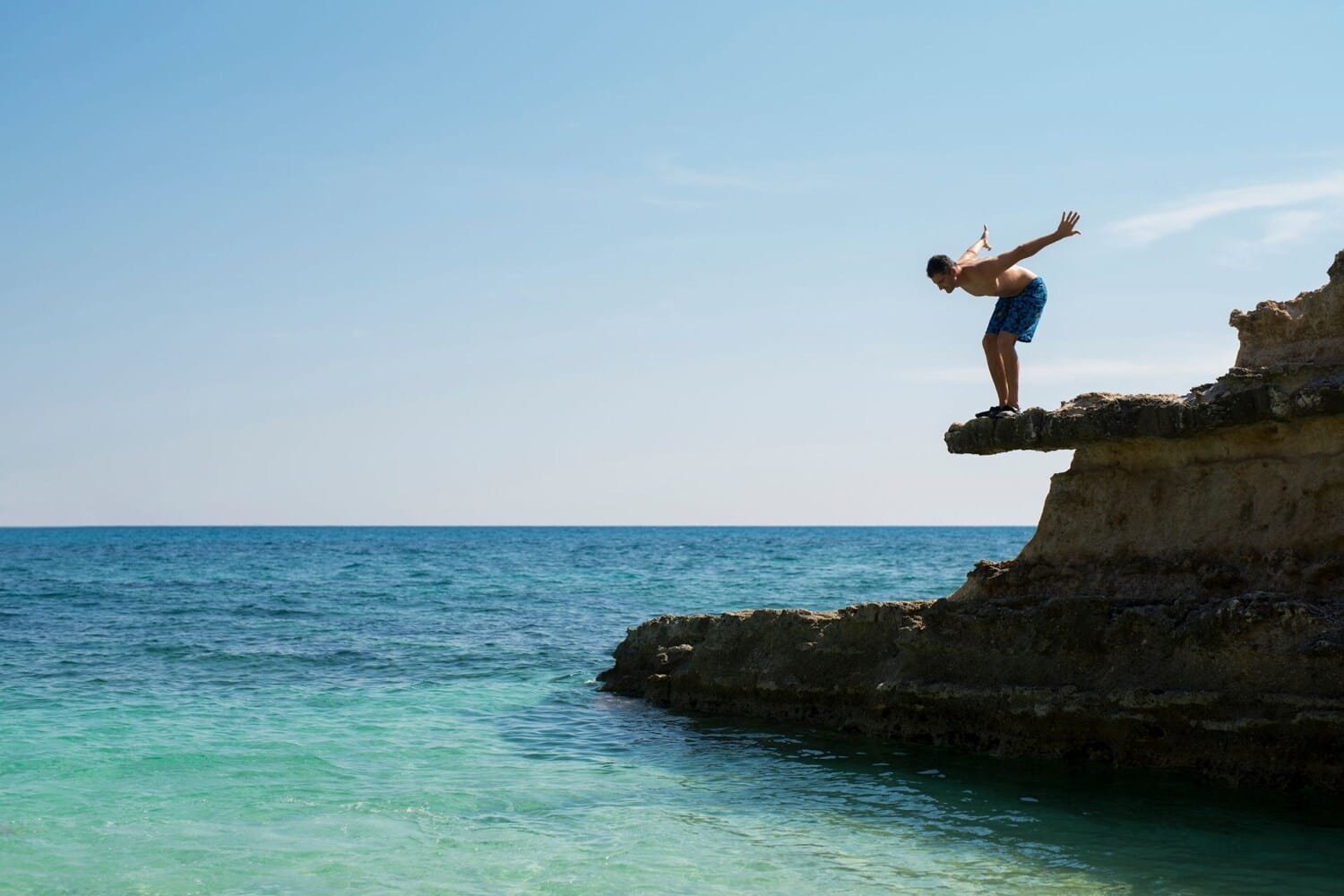
Underestimating Environmental Factors
Hawaii’s dramatic beauty comes with constantly changing weather patterns. What looks like a calm ocean can become treacherous within minutes. Wind, tides, and unexpected swells can turn a seemingly safe jump into a life-or-death situation.
It's crucial to remember what happened at Laie Point in 2017. Officials issued warnings about dangerous conditions at this Oahu cliff jumping spot after a 38-year-old man died after jumping despite strong currents. This tragic incident highlights the need to respect the power of the ocean and never jump if in doubt.
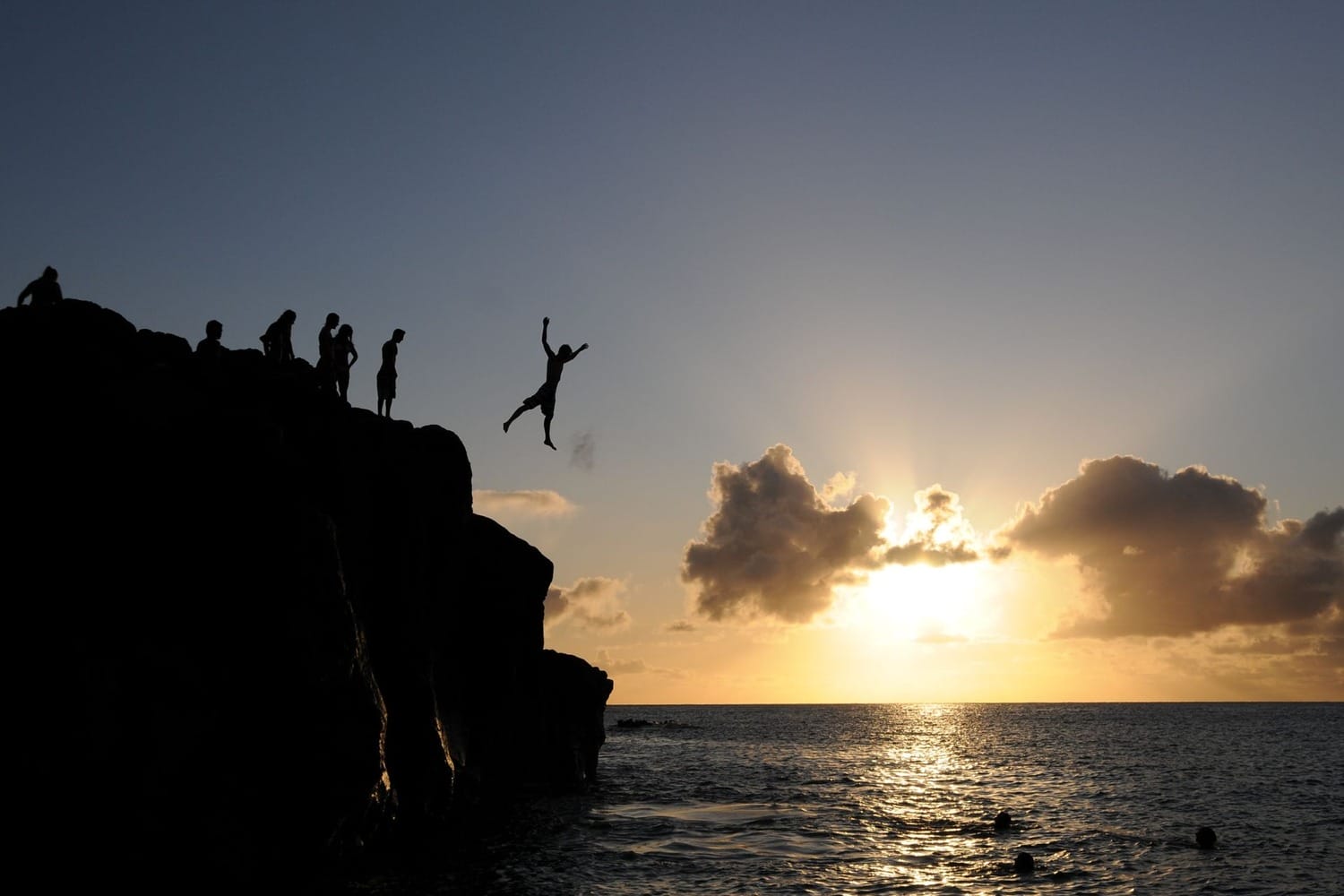
Overconfidence and Peer Pressure
Often, cliff-jumping tragedies are linked to what seems only a friendly pressure. Friends daring each other to jump from ever-higher points or showing off on social media is a recipe for disaster.
Similarly, overestimating your swimming skills and underestimating the environment’s potential to change quickly contributes to accidents.
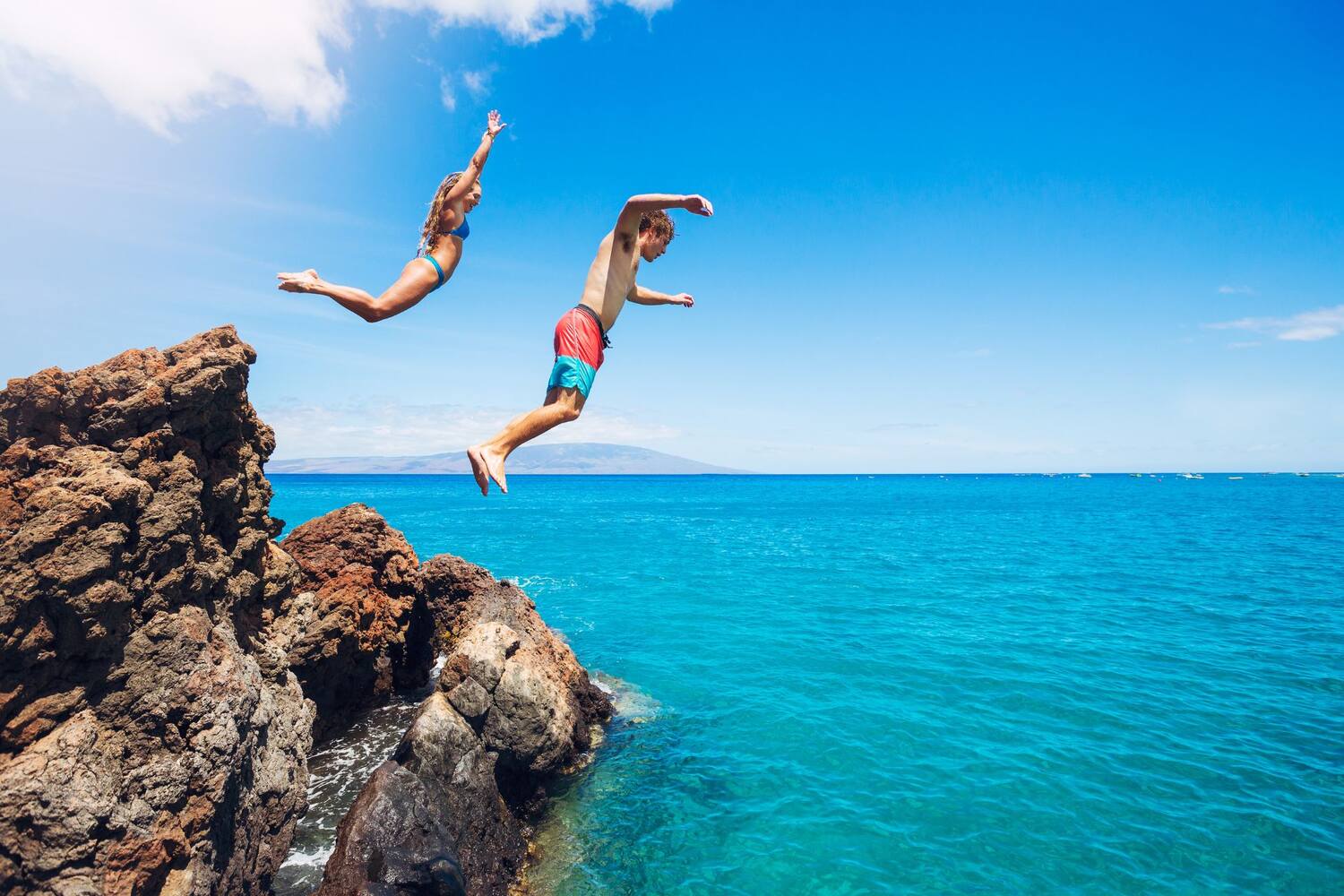
Tips for Cliff Jumping in Hawaii
While this post highlights the risks inherent in cliff jumping, it doesn't mean you can't enjoy it if you really want to. Cliff jumping is a dangerous sport that’s not for everyone. To help make safer choices, consider these safety tips before taking the leap:
Talk to Locals
Before you jump at a new location, connect with local residents, particularly lifeguards or experienced cliff jumpers. They know the waters best and can tell you about currents, submerged obstacles, and any recent incidents at the spot you're considering.
Watch and Learn
Even if you are eager to jump, watch others. Observe their entry into the water, how long it takes them to resurface, and if they have difficulty getting back to shore. This will give you visual clues about underwater currents and potential hazards you might not spot from above.
Start Low, Go Slow
Jumping from lower heights when you are new to a location is best. This gives you a chance to assess the water entry and any underwater currents before you attempt a more daring jump. Gradual progression allows you to build your confidence and comfort level.
Gear Up for Safety: Essentials for Cliff Jumping
Consider using these items when going cliff-jumping, and reduce your risk:
Gear | Purpose |
Water Shoes | Protect your feet from sharp rocks and coral reefs |
Life Jacket | Provide extra buoyancy, especially if you're new to jumping or in a new location |
GoPro (with floaty grip) | Capture your adventure, and it's safer if it's secured and won’t sink if dropped |
Whistle | Signal for help if needed |
First Aid Kit | Essential for dealing with minor injuries that may occur |
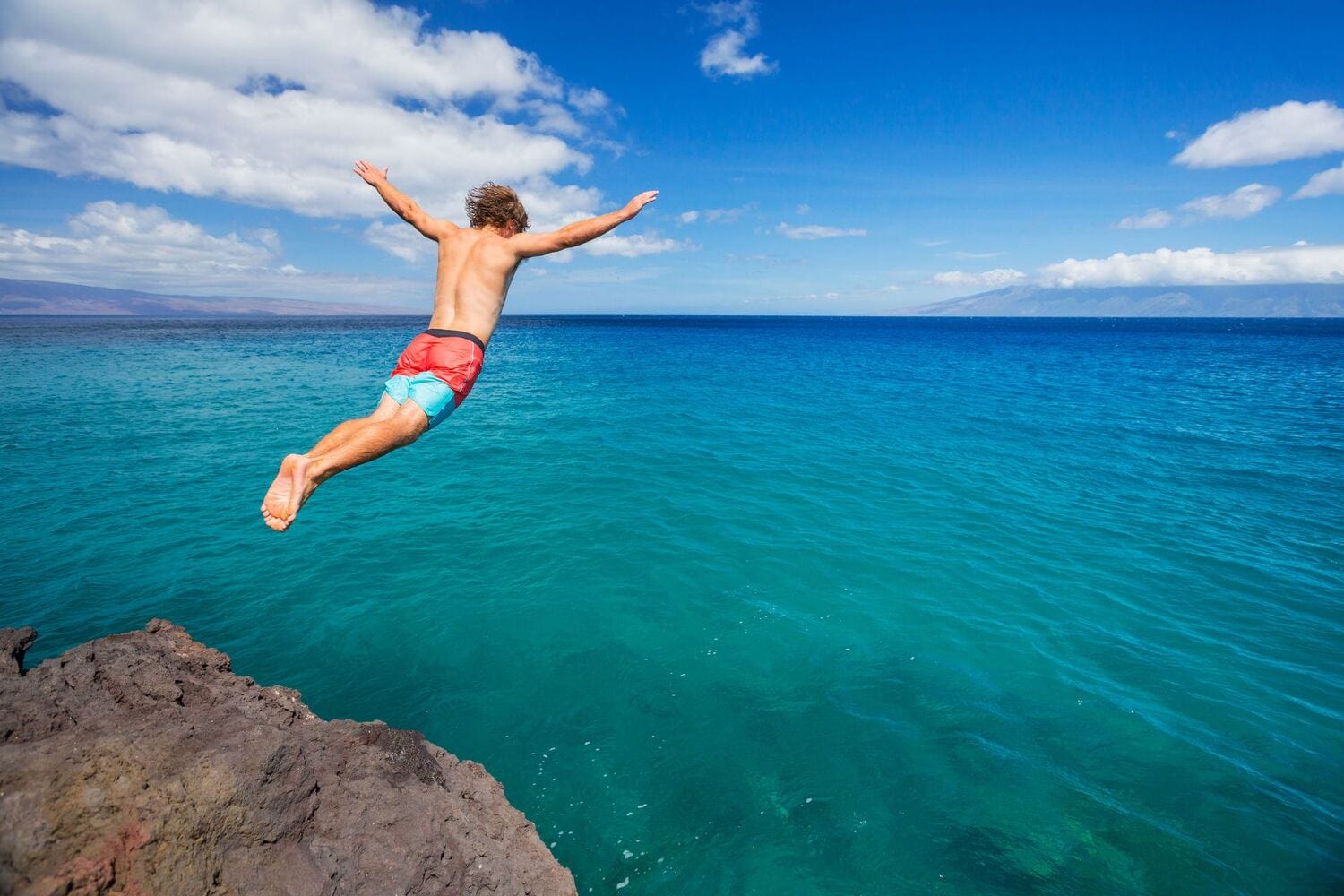
Popular Cliff Jumping Locations in Hawaii
Let’s explore a few popular cliff-jumping locations on the islands. Please remember that even though these locations may draw many visitors, safety always comes first. Double-check conditions and seek advice before making your leap.
South Point Cliff Dive - Big Island
Located on the Big Island, South Point is famous for being the southernmost point of the country, and its towering cliffs beckon thrill-seekers from far and wide.
You can drive from the Green Sand Beach parking lot to South Point, a short drive away. But while many visit hoping to try the South Point cliff jump, it’s worth noting the risks.
Sadly, there have been several fatalities and injuries at South Point over the years, making it essential to be extra cautious here.
The designated parking lot is at the end of South Point Road. Nearby you'll find a spectacle of color - green, black, red, and white sands created by the area’s unique ocean and volcanic activity. While the Big Island isn’t as popular as Oahu and Maui, it’s still worth a visit, and cliff jumping is only one reason!
Laie Point - Oahu
This 30-foot cliff jump on Oahu's North Shore offers stunning scenery, but as we mentioned, it comes with strong currents. Before jumping here, talk to locals about recent water conditions.
Sadly, Laie Point serves as a reminder of how important this is because of past tragedies. Always be cautious when attempting this jump - And if you change your mind, you’ll still be able to take gorgeous photos!
China Walls - Oahu
China Walls, also located on Oahu, is a cliff-jumping spot with unique rocky terrain. However, due to its unpredictable and potentially dangerous conditions, it’s only recommended for very experienced cliff jumpers. Even if you are one, extra precautions are necessary here.
Beginner-Friendly Spots
For those looking for a gentler introduction, locations like Yokohama Beach, also on Oahu, offer lower jumps with less extreme conditions. These spots are fantastic alternatives if you want a taste of cliff jumping without the higher risks. Even though the heights are less extreme, the same rules apply.
What are the risks of cliff jumping in Hawaii, even at lower heights? You can still experience unexpected currents or underwater obstacles. Approach every jump, big or small, with caution. Incredible views also make for a great picnic spot. And if you're a nature lover, a visit here pairs well with a nearby trip to Hanauma Bay Nature Preserve.
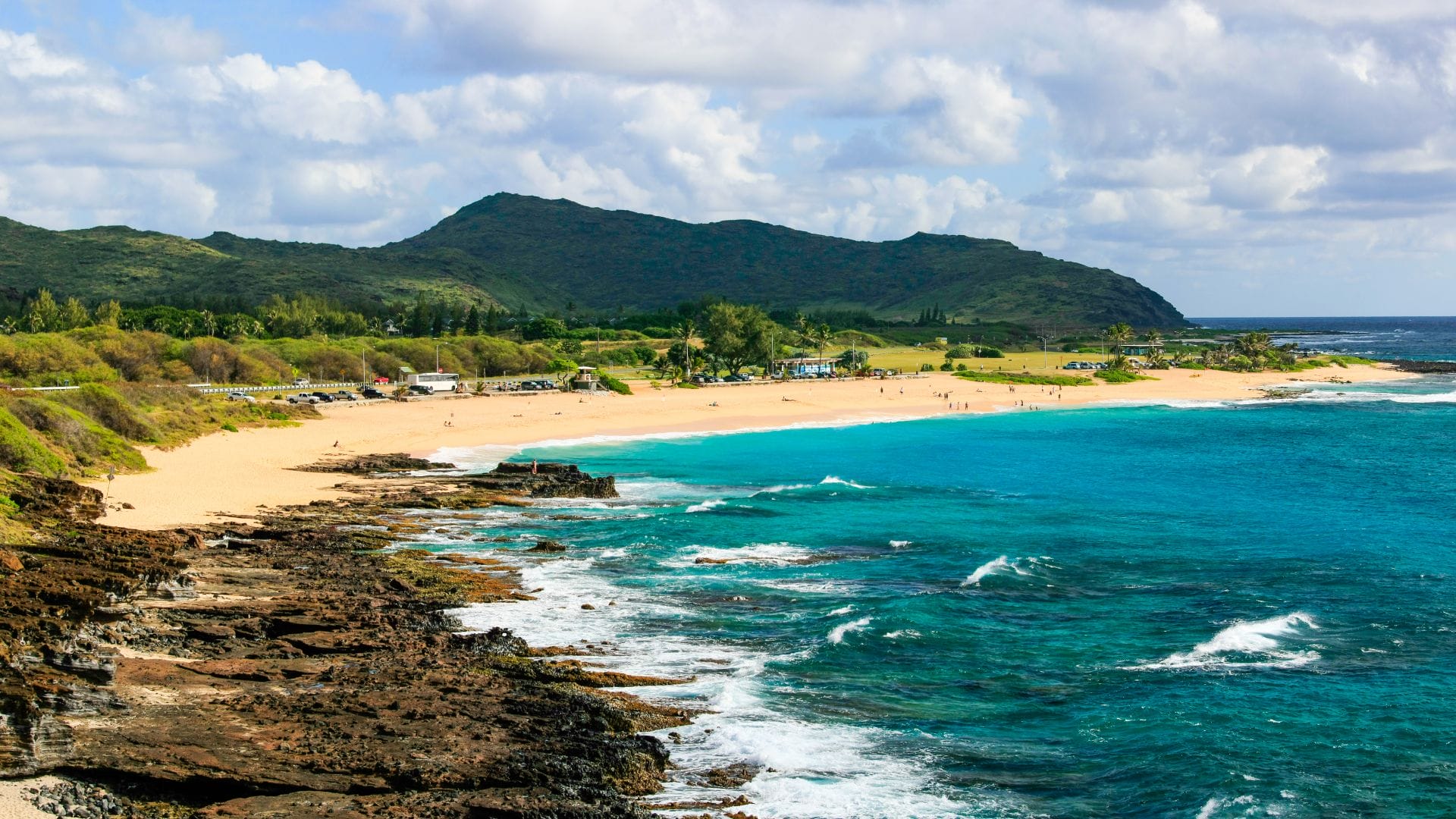
Conclusion:
As tempting as it is to throw caution to the wind, remember that enjoying cliff jumping in Hawaii means taking responsibility.
Ask yourself what the risks are of cliff jumping in Hawaii at the location you have chosen, listen to your instincts, prioritize safety above all, and appreciate the privilege of experiencing such natural beauty responsibly.
By staying informed, being prepared, and approaching the activity with respect, you can minimize risks while maximizing the thrill of this exhilarating pursuit.
Frequently Asked Questions
There's no single answer to this. A lot depends on factors such as body weight, how you enter the water, and the depth and condition of the water.
However, jumping from as low as 20 feet can generate enough force to cause fractures, especially upon impact with shallow water or if entry isn't done correctly. As the height increases, the risk of severe injury from impact significantly grows.
Black Rock in Maui is famous for its cliff diving ceremony held at sunset. However, it's crucial to remember that jumping off Black Rock outside of the designated ceremony times and without proper precautions can be dangerous.


